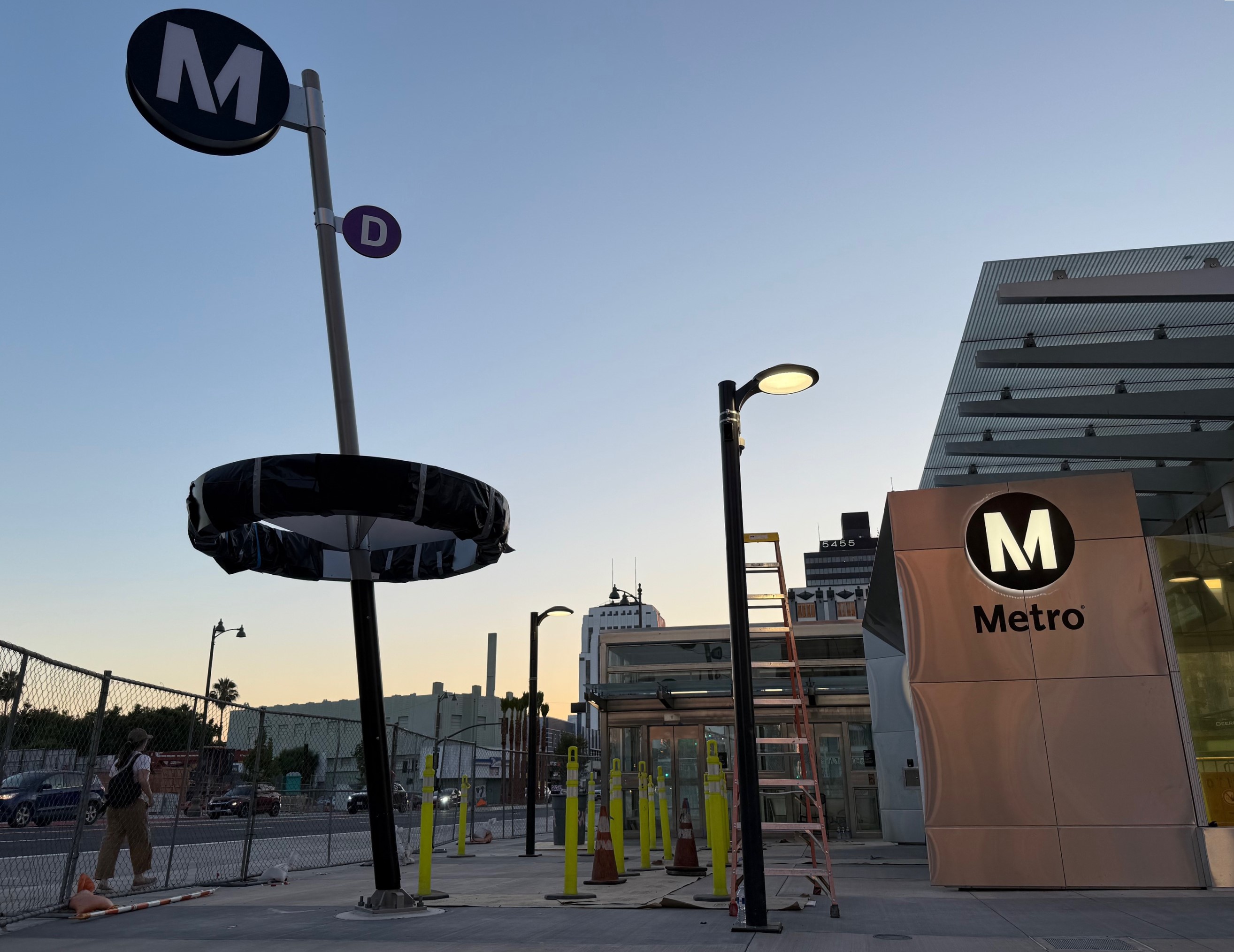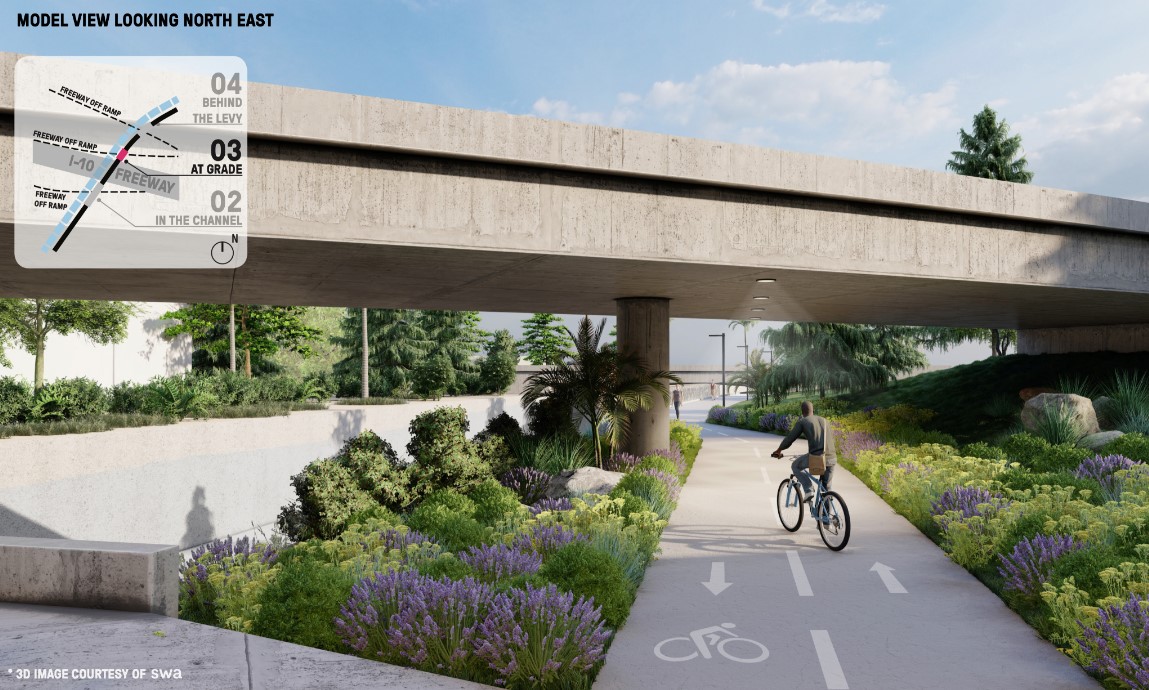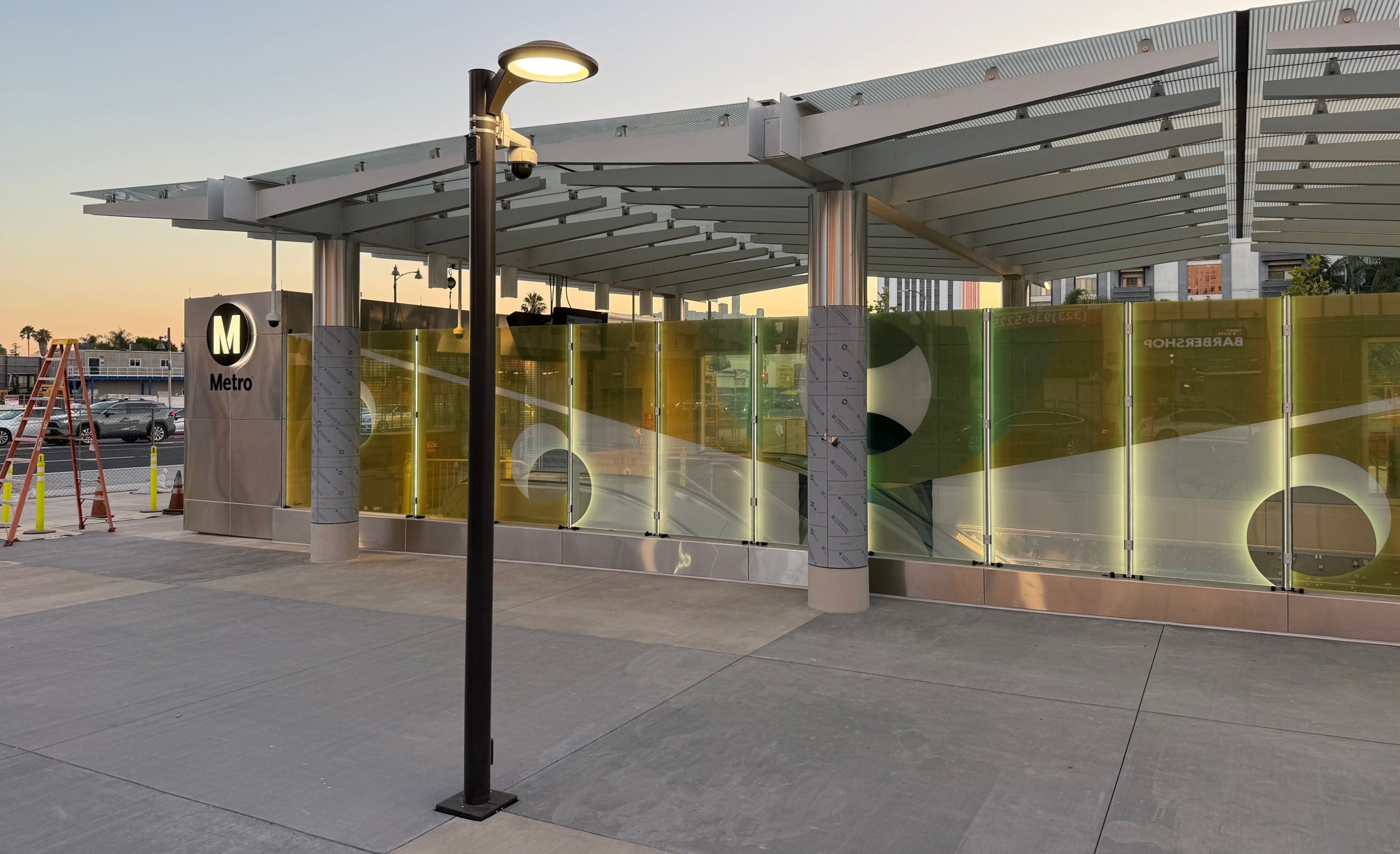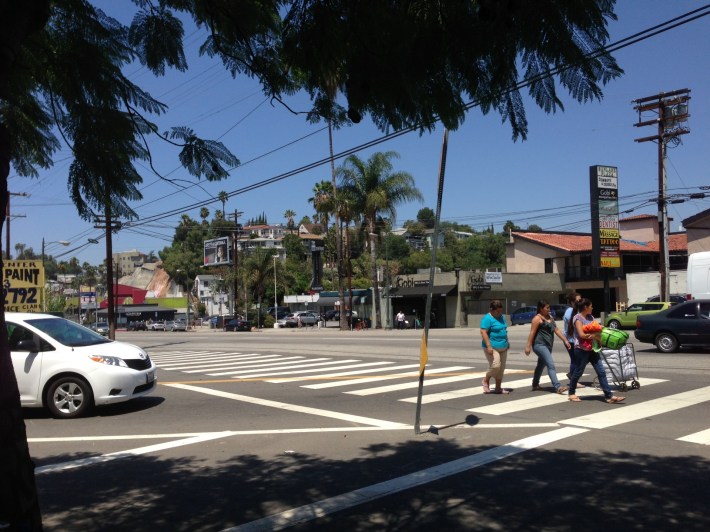
Sometimes neighborhood livability and walkability do not need to wait for multi-million dollar infrastructure streetscape re-vamps. Sometimes all it takes is paint. Or, as in the case of these streets, longer-lasting thermoplastic striping that doubles as "paint."
Thanks to tips from friends of the blog, Ryan Johnson and Jessica Meaney, I recently visited two central Los Angeles intersections that the city Department of Transportation (LADOT) has re-worked for increased safety and walkability.
In both cases, streets had and have a stop sign, as well as right turns at angles greater than 90-degrees, further smoothed by gradually curving sidewalks. In the past, LADOT's striping allowed for relatively dangerous and high-speed right turns. These weren't quite suburban slip-lanes, but they were nearing that. Drivers could whip around the curve, endangering themselves and others.
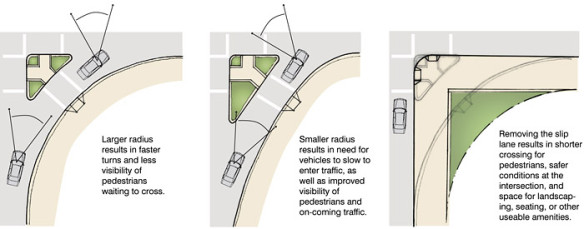
At both locations, LADOT added a striped curb extension to help drivers to make a full stop before making a full 90-degree right turn. This makes driving safer by improving visibility and reducing speed. It also has the benefit of shortening the crossing distance for pedestrians.
The intersection of Occidental and Sunset Boulevards is in the L.A. neighborhood of Silver Lake, a block east of Silver Lake Boulevard. The re-striping was done in 2014, according to Johnson.
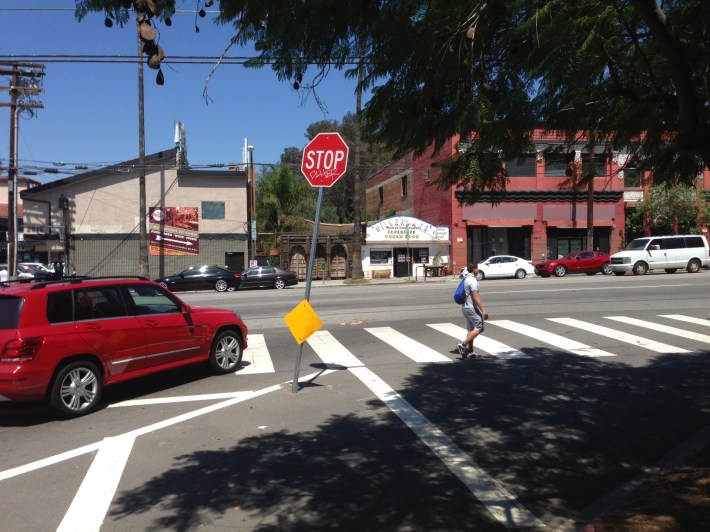
The intersection of Echo Park and Park Avenues is at the northeast corner of Echo Park (the park) in Echo Park (the neighborhood.)
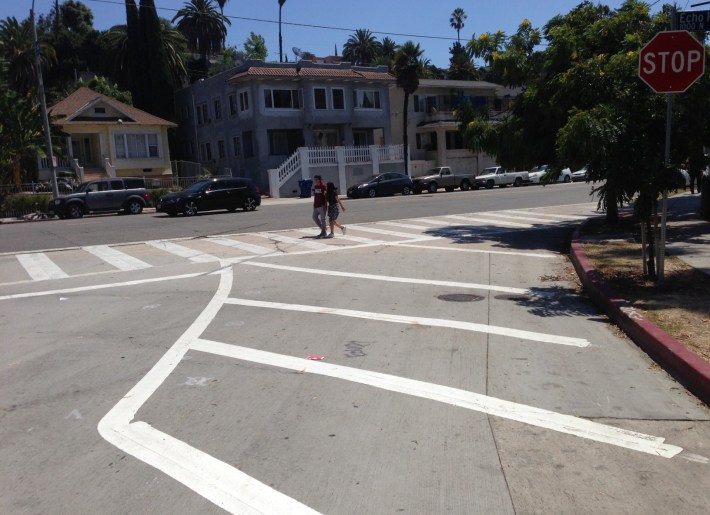
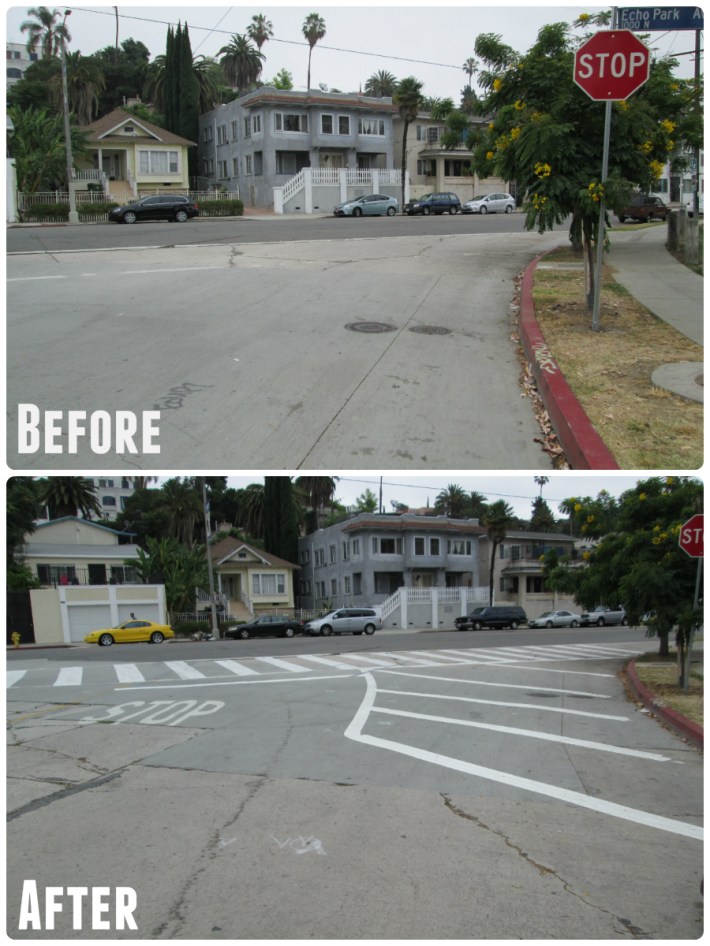

Ryan Johnson reports:
This one is at Echo Park Ave and Park Ave right on the edge of the park, and it will eventually have reflective bollards along the edge of that hashed area to discourage motorists from encroaching. I would love to see some planters in there to extend the park. The treatment reduced the crossing distance while exposed to traffic from about 120 feet to 75 feet!
Johnson also reports that credit on these two improvements is due to LADOT's Tim Fremaux, formerly with LADOT Bikeways and a former SBLA Streetsie Award nominee.
Readers, where are you seeing these sorts of small-scale LADOT safety changes? And, probably more importantly, where do you think these striping improvement are needed to make places safer?

